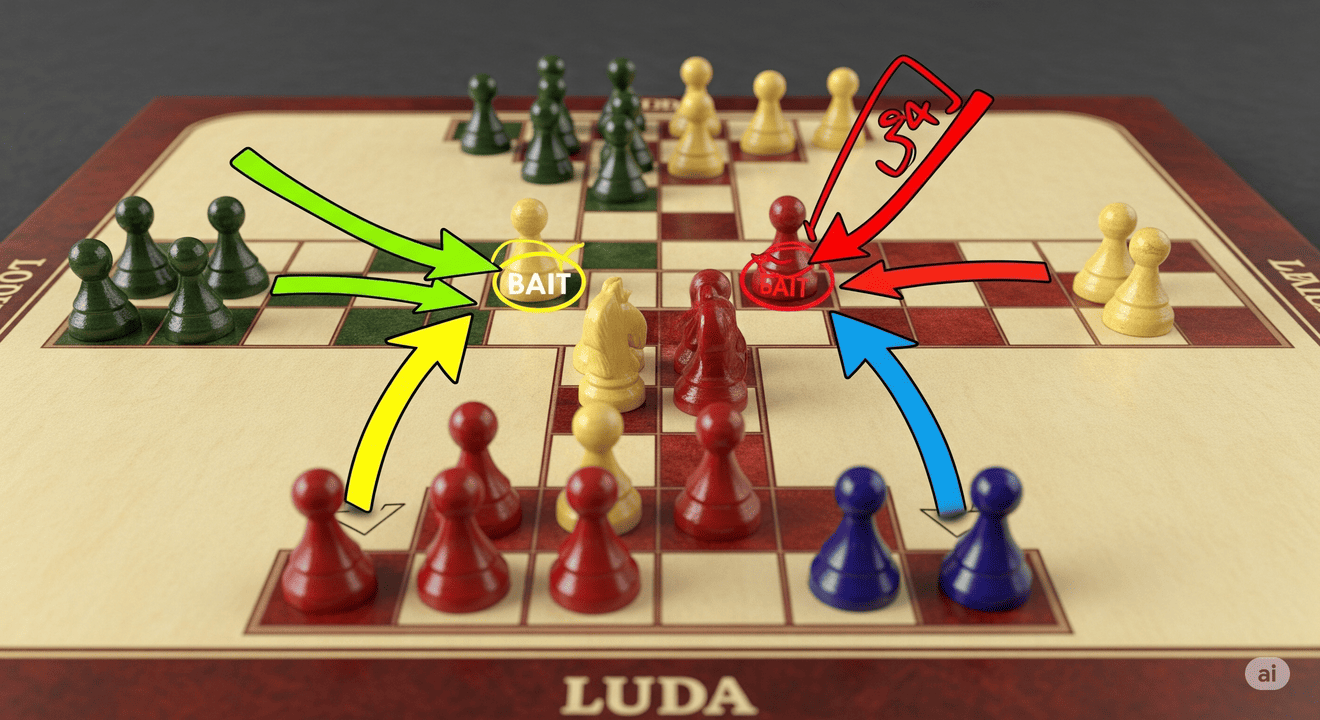Advanced Ludo Strategy: Pro Tips to Master Pawn Positioning & Baiting
You know the rules by heart. You’ve learned the essential tricks. You consistently avoid the common mistakes. Yet, you still encounter elite players on Ludo Supreme Gold who seem to operate on a different level. They control the board with surgical precision, forcing you into bad moves and winning games you thought were secure. What is their secret? The answer lies in mastering advanced Ludo strategy.
This is your masterclass. We are moving beyond simple tips into the realm of grandmaster-level play. This is where Ludo transforms from a race into a sophisticated game of board control, pawn structure, and psychological warfare. If you want to join the ranks of the top players in India’s hyper-competitive gaming scene, learning the arts of pawn positioning and baiting is non-negotiable. These are the strategies that will elevate your game from good to unstoppable.
Beyond a Simple Race: Thinking in Terms of Board Control
The single biggest leap in a player’s skill comes when they stop seeing Ludo as a simple race to the finish line. Start seeing the board as a territory, a battlefield to be controlled. Every move you make should be designed to expand your influence and limit your opponent’s options. This starts with understanding your pawn structure.
Your pawn structure is the strategic arrangement of your four pawns (*goti*) at any given moment. Before each move, ask yourself:
- Does this move strengthen my defensive position or create a new line of attack?
- Am I controlling the critical “star” squares that act as safe havens?
- How can I use my pawns to create a web of threats that forces my opponent to play defensively?
A player who only thinks about running is playing a simple game. A player who thinks about controlling space and dictating the tempo is playing to win. This is the core mindset of every pro Ludo player in India.
The Art of Pawn Positioning: Assigning Roles to Your Goti
To control the board, you must understand that not all your pawns have the same job. At different stages of the game, each of your four pawns should be assigned a specific role. Thinking this way will bring immense clarity to your decision-making.
1. The Runner (The Star Player)
This is your lead pawn—the one that has traveled the furthest and is closest to reaching home. The Runner’s only mission is to finish the race. Your other three pawns must act as its support system, clearing threats and creating a safe passage for it. The Runner is your most valuable asset on the board.
2. The Hunter (The Striker)
The Hunter is a pawn positioned in the central part of the board, often in an opponent’s quadrant. Its purpose is to exert constant pressure and create fear. A well-placed Hunter forces opponents to make suboptimal moves just to keep their pawns safe. It is your primary tool for aggression and for disrupting your opponent’s strategy.
3. The Guardian (The Defender)
The Guardian is your defensive anchor. This pawn typically stays in the earlier half of the board, protecting your home territory. Its job is to form blocks, guard your starting squares, and neutralize any enemy Hunters that venture too close. The Guardian provides the security that allows your other pawns to play aggressively.
4. The Bait (The Sacrificial Piece)
This is the most subtle and powerful role, a key element of psychological warfare. The Bait is a pawn you deliberately place in a risky—but tempting—position to lure an opponent into a trap. This advanced tactic is explored in detail below.
The Baiting Gambit: How to Set the Perfect Trap
The ludo baiting trick is a high-level maneuver where you sacrifice a less valuable pawn to gain a significant, often game-winning, strategic advantage. It’s about playing your opponent, not just the board.
When to Use a Baiting Strategy:
- When you need to clear a dangerous path for your valuable “Runner” pawn.
- When you are facing a highly aggressive player from whom you can predict an attack.
Executing the Gambit:
- Step 1: Identify Your Pieces. Choose a low-value pawn (like a Guardian or a newly entered pawn) to be your “Bait.” Identify your opponent’s aggressive “Hunter” as the target of your trap.
- Step 2: Set the Lure. Move your Bait pawn to a square that looks like a careless mistake on your part. It should be an easy and tempting capture for your opponent.
- Step 3: The Opponent Bites. The aggressive opponent, eager for a capture, will likely use their turn to eliminate your Bait pawn.
- Step 4: The Strategic Payoff. This is your victory. The opponent has just wasted their entire turn capturing a pawn of low importance. You can now use your next crucial turns to move your valuable “Runner” pawn through the now-cleared path, often making it completely safe.
You lose one pawn but gain an insurmountable lead. This is the kind of calculated trade that defines an expert player on Ludo Supreme Gold.
Mastering the Endgame: When the Final Pawns Race Home
The ludo endgame strategy kicks in when players have only one or two pawns left on the board. The game becomes a tense and mathematical race to the finish.
- The Countdown: This is the most critical calculation. Count the total number of steps your remaining pawns need to get home and compare it to your opponent’s count. This tells you if you are ahead or behind.
- If You’re Ahead: Play defensively. Your only goal is to get home. Use every star zone. Do not take any risks to capture an opponent unless it’s 100% safe. Make your opponent come to you.
- If You’re Behind: You must play aggressively. Your only path to victory is to capture one of your opponent’s pawns to reset their progress. You have to take calculated risks to create an opportunity.
Think Like a Champion
To dominate the Ludo landscape in India, you must elevate your thinking. You’re not just a player rolling a die; you’re a strategist managing assets, a commander controlling a battlefield, and a psychologist reading your opponent. By mastering pawn positioning, executing flawless bait-and-switch gambits, and calculating the endgame, you unlock a new level of play.
The board is set. Your opponent is waiting. It’s time to show them you’re not just playing the game—you’re controlling it.
Ready to test these advanced strategies? Log in to Ludo Supreme Gold, challenge a skilled opponent, and put your new grandmaster plan into action!





Post Comment